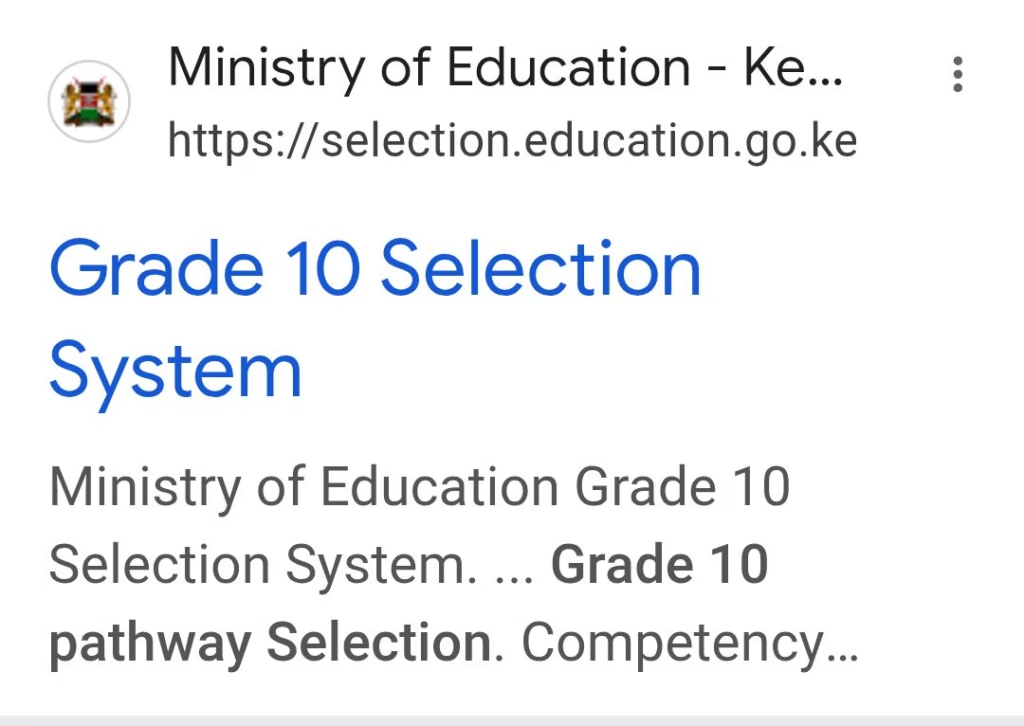Beginning in 2026, National Schools Will Provide All CBC Career Pathways
Education Cabinet Secretary Julius Ogamba has said that as part of a comprehensive revamp of Kenya’s education system, all national schools will be required to implement all three senior school career paths beginning in January 2026. The government is attempting to improve inclusivity, diversity, and job market preparation among students, which represents a major change in the implementation of the Competency-Based Curriculum (CBC).
All national schools will be required to offer the three pathways: Social Sciences, Arts and Sports, and Science, Technology, Engineering and Mathematics (STEM). The change is a component of a larger shift to make use of the resources, workforce, and academic prowess of national universities.
In his speech at the National Schools Conference in Mombasa, CS Ogamba stated that the classification of schools into national, extra-county, county, and sub-county will be eliminated in 2026. Based on their ability to provide the CBC, institutions will be categorized as either “triple pathway” or “double pathway.”
“We have already established guidelines for the switch to Grade 10 in January 2026. In order to ensure fair access to all pathways, the current school categorization must be abolished,” Ogamba said. “We are urging schools with the necessary infrastructure and staffing to adopt the triple pathway classification.”
To back the new arrangement, including facilities for arts and sports, which have traditionally been underdeveloped, Ogamba promised stakeholders that the government would invest in infrastructure improvements in select schools.
In support of the policy, Teachers Service Commission (TSC) CEO Nancy Macharia exhorted national schools to take the lead in this revolutionary change. “With your superior facilities, you are well placed to offer all three pathways that define the CBC,” she stated.
The commission has already retooled over 450,000 teachers to handle CBC material, according to Macharia, who is getting ready to retire in two months. These include:
There are 229,292 instructors in elementary schools.
There are 75,000 instructors in lower secondary schools.
There are 154,292 instructors in secondary schools.
In partnership with the Kenya National Examinations Council (KNEC), the Kenya Institute of Curriculum Development (KICD), and other organizations, this training was delivered using a multi-agency and cascade model.
“I am glad to leave behind a well-trained teaching workforce and established systems to manage the education sector effectively as I near the end of my time at the TSC,” Macharia stated.
She also emphasized the productive negotiation and execution of two significant Collective Bargaining Agreements (CBAs), which she claimed have helped to stabilize the education industry.
The Ministry of Education, meanwhile, will hold a National Conversation on Competency-Based Education (CBE) at the Kenyatta International Convention Centre (KICC) in Nairobi. The occasion is anticipated to unite educators, government representatives, parents, and students in order to discuss CBC implementation and plan the future course of change.
The triple pathway rollout is expected to revolutionize Kenya’s educational environment, paving the way for a system that is more learner-centered and skills-focused, catering to the needs of the 21st-century workforce.
Other news: According to scientists, a toxin produced by gut bacteria is the main cause of the rise in colon cancer cases among young people.
From 2026, all CBC career routes will be available in National Schools.






